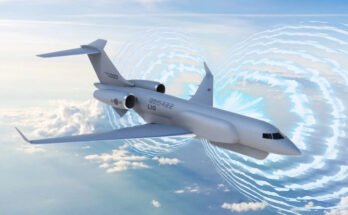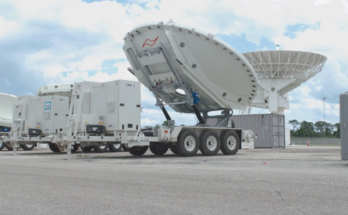by C. Zachary Hofer, Electronics Analyst, Forecast International.
As part of the U.S. Air Force’s ongoing effort to extend the service life of its fighter assets, on October 30, 2015, the Air Force awarded Boeing a major contract. The $281.7 million deal will furnish in-service F-15s with the latest fire-control radars. The procurement includes 17 APG-63(V)3 and 29 APG-82 RMP radars.
Over the past decade, the delay of the F-35 rollout, combined with increased budget scrutiny, has caused the Air Force to reconsider the way it utilizes its fighter assets going forward. The decision was made to outfit existing aircraft with the latest in electronics technologies in order to maintain air superiority in the areas of protection, detection, tracking, and fire control if a new, more modern platform was not immediately forthcoming. This has resulted in a major effort to upgrade the F-15 fleet’s fire-control radars with more advanced, solid-state, AESA-equipped options.
The two radars that this deal concerns, the APG-63(V)3 and the APG-82 RMP, are designed to equip two different generations of F-15 fighters. Older F-15Cs are being outfitted with Raytheon’s comparatively less advanced APG-63(V)3, while the newer-generation F-15Es are receiving the company’s APG-82 RMP. The APG-82 RMP itself contains components derived from the lower-powered APG-63(V)3 , taking that radar’s antenna and mating it to the more advanced circuitry of the APG-79 model that equips F/A-18E/F jets.
APG-63(V)3 deliveries to the Air Force began in 2009. An early developmental model was delivered to Boeing for integration in June 2006, and the program received the official go-ahead with a USAF low-rate initial production (LRIP) contract for seven units in December of that year. Forecast International expects the balance of APG-63(V)3 upgrades to U.S. Air Force and Air National Guard F-15s to wrap up in 2020. The contract runs through January 2019, likely providing for all the radars needed through the end of the upgrade (while radar deliveries will end in 2019, final aircraft deliveries are not expected until 2020).
Meanwhile, Boeing selected Raytheon to upgrade the F-15E’s APG-70 radar in November 2007. Initially, the new radar was called APG-63(V)4, but the program, as it incorporated aspects of both the APG-63(V)3 and APG-79 radars, eventually gained its own A/N designation in September 2009, becoming the APG-82. Full fiscal support for the upgrade came from the USAF in October 2008, when the service awarded the program a $238 million system design and development contract. The radar’s suffix, RMP, comes from the U.S. budget item name for the APG-82, the F-15E Radar Modernization Program. After production of the first six LRIP units began in October 2011, full-rate production commenced in 2014, with upgrades continuing through 2023.
The October 30 contract is noteworthy not just for its dollar value, but also for what it means to the overall radar industry. Companies can reap financial rewards by supporting new-build aircraft and by locking in upgrade contracts for aircraft families, and opportunities are not limited to just the U.S. market. As the pacesetting U.S. forces endorse a major electronics upgrade, other forces around the world follow suit to match the latest advancements, bringing enormous rewards to contractors.
FI’s Radar Forecast provides coverage of 175+ U.S. and international radar systems and programs. Featured are all categories of radars in use by the defense and aerospace industries, including airborne fire control, airborne early warning and control (AEW&C), sea-based and land-based radars.
For 50 years, Forecast International intelligence reports have been the aerospace and defense industry standard for accurate research, analysis, and projections. Our experienced analysts compile, evaluate, and present accurate data for decision makers. FI's market research reports offer concise analysis of individual programs and identify market opportunities. Each report includes a program overview, detailed statistics, recent developments and a competitive analysis, culminating in production forecasts spanning 10 or 15 years. Let our market intelligence reports be a key part of reducing uncertainties and mastering your specific market and its growth potential. Find out more at www.forecastinternational.com




